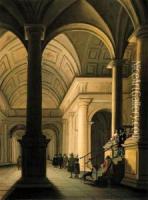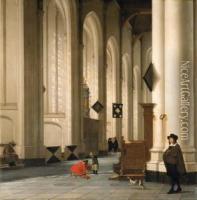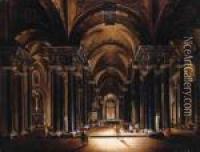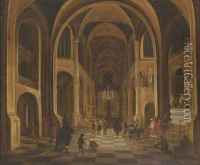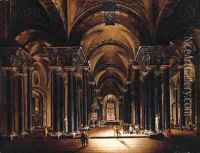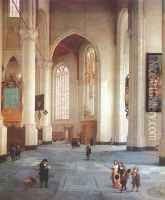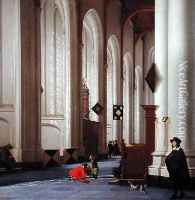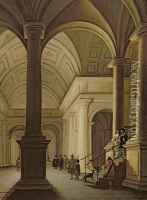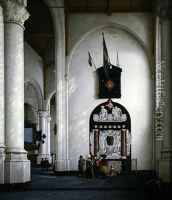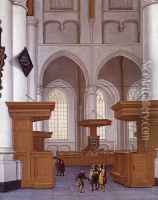Anthonie De Lorme Paintings
Anthonie De Lorme was a Dutch painter, primarily known for his interior paintings of churches. Born in 1610 in Tournai, which was then part of the Southern Netherlands, De Lorme's early life is not well-documented. He is often associated with the city of Rotterdam, where he was active as an artist for most of his career.
De Lorme's work is characterized by its meticulous attention to architectural detail and the play of light and shadow within interior spaces. He specialized in the genre of 'kerkinterieurs' or church interiors, a popular theme in Dutch Golden Age painting. His paintings often depicted the grand and ornate Protestant churches of the Netherlands, capturing their vast interiors with a remarkable sense of depth and perspective.
In his church interior paintings, De Lorme would frequently include figures, although they were typically small and overshadowed by the grandeur of the architectural setting. This emphasis on the church's architecture over its occupants reflects the Protestant values of the time, which prioritized the communal space of worship rather than religious hierarchy or individual grandeur.
De Lorme was influenced by other artists of his time, such as Hendrick van Vliet and Gerard Houckgeest, who were also known for their church interior paintings. However, De Lorme's style is distinguishable by his unique handling of light and his precise architectural renderings.
Although not as widely known as some of his contemporaries, Anthonie De Lorme's work provides a valuable insight into the Dutch Republic's religious and cultural landscape during the 17th century. His paintings are held in several museums and collections around the world. De Lorme passed away in 1673, leaving behind a legacy of art that continues to be appreciated for its historical value and artistic skill.


